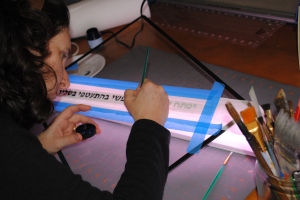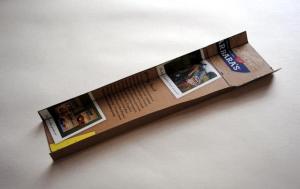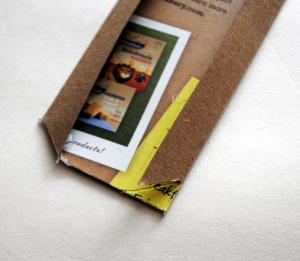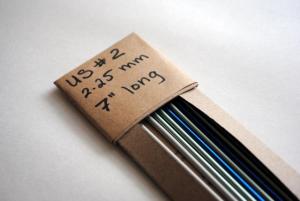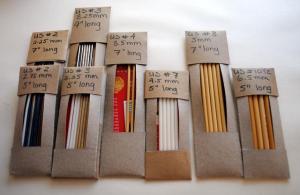Posts Tagged how to
Making a Birds on a Wire Tallis
Posted by cozycoleman in Judaica, painting, sewing, silk painting, tallit on March 3, 2011
The day before valentines day I received an order for a tallis. A delightful customer is buying herself a birthday present! Which, incidentally is only three weeks after mine! I just celebrated my 40th birthday too! I have documented the process below.
Step 1) I start with finalizing any design elements. For this design, that usually only involves the atarah. A tallis traditionally has an “atarah” or “crown” with a Jewish prayer on it. These days many folks chose not to use the more traditional prayer.
This customer has chosen a less traditional but more personally meaningful prayer from The Book of Blessings .
יפתח לבי תזדכך נפשי בהתעטפי בטלית
May my heart be opened, may my spirit become clear, as I envelop myself in the tallit.
It took some time and a couple emails to our Synagogues new part-time Rabbi Susan Elkdosi (congratulations Susan) but she quickly found the Hebrew for me, so I could avoid any typos!
I manipulate the Hebrew on the computer for size and font, then I print it out, tape it together and get to work!
Step 2) I wash the silk with synthrapol to remove any oils or sizing that may be there.
Step 3) Then I iron a piece of freezer paper on each end to stabilize the fabric. I don’t need to stretch the silk for this particular design. Since the pigment goes on very dry, the freezer paper is adequate.

ironing on the freezer paper
Step 4) Then I tape my template to my workspace and start taping the lines for the wire. I do this in several sessions waiting for the paint to dry between overlapping lines. Sometimes I speed the process along a bit with my trusty hairdryer. This is why anyone in my family who wants to dry their hair has to first go rummaging through my studio! I rarely use it for my hair, which I am content to let nature take care of… probably why it’s always so frizzy!

taping the lines
Step 5) While the lines are drying, I paint the atarah. I know Hebrew is written from right to left, but since I am right handed, I find I save a lot of smudges and re-dos if I paint it in backwards. I tape the computer printout of the prayer under the pre-sewn atarah and use a makeshift light table to see the letters below. The brush I use for this is tiny. It takes a steady hand, so my children are all trained to STAY AWAY from Mommy when she’s painting a Tallis!
Step 6) I paint the birds in the same way. I also paint a couple birds on the bag (shown on the towel in this picture) . I decided to omit the wires on the bag this time. I thought it was a nice touch to just have the birds flying around the bag, waiting to land on the tallis. The paint is navy blue jacquard silk paint. It came out very dark navy. It looks black in these pictures, but really is navy blue!

birds painted
Step 7) Then I sew the pieces together. This includes the atarah, the tallis bag and the corner pieces. I sew an eyelet hole in the middle of each corner for tying the tsitsit. (The sewing details will be the subject of another post.)

sewing
All that’s left to do on this tallis is making the fringe on the bottom, and tying the tsitsit on. This tallis will come with a coordinating wool kippah. Hopefully all will arrive in time for the customer’s birthday.

eyelet
Happy Birthday!
10 Steps to Make Your Own Perfect Needle Holders
Posted by cozycoleman in Free patterns, knitting, tutorials on February 13, 2011
The perfect sock needle holder has already been invented by the owner of my lys. You can find them here: at woolworksltd.com and they range in price from $12 to $18. I own one and love it. It makes a satisfying swishy sword in sheath kind of sound when you put the top on. And what knitter doesn’t love the sword in sheath sound?
The thing is… I have a lot of knitting needles. And by a lot, I mean that in dpns alone I could knit for the entire US army and still have spare needles… ok so I exaggerate (slightly). (And I think Stephanie Pearl McPhee has me beat by about 1 thousand).
Up until now I have kept all my needles in ziploc baggies. One (2 gallon size) for circular, one (same) for dpns. It works, sort of. I’ve always wished I could have a needle holder for every set of dpns, and a few extra for WIPs. But, did I mention I have a lot of needles?
Every time I want to do a project, I dump the bag out, take out my handy needle gauge and search for a matching set. I have one needle holder that is perfect for storing needles and keeping your work on the needles too.

DIY Needle Holder
So I decided to make my own needle case, fashioned after the one above. They are a different shape due to the materials used, but they are virtually free. Most of what you need you should (as a knitter and crafter) already have at home.
This way I can have a holder for every work in progress and spares to keep my needles in. It helps me sort them out in my bag too. I made them out of old cereal boxes, so they are recycled and eco friendly too!
Here’s how you can make your own:
You will need:
- an empty cereal box (preferably one that the kids didn’t smoosh into the butter dish).
- a metal ruler and some old scrap to cut on, or a cutting mat
- a bone folder (I like the one by Martha Stewart available at most craft stores) If you don’t have a bone folder a size US#10 or bigger bamboo knitting needle will do, you’ll want one with a dull point.
- a marker (optional)
- a pencil
- a glue gun
- brown tape (optional)
- you will also find a triangle or a quilter’s guide useful for making sure everything is square (I forgot to put that in the picture).
- oh, and of course, the needles you are making the case for.
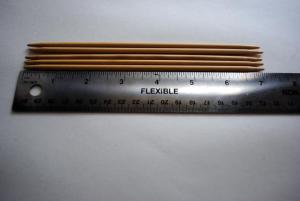
1. Measure your needles. Mine measured 7″. The directions here are for that size. I have included measurements for smaller and larger needle sizes below.
2. Cut a rectangle from your cereal box that is 9 1/2″ by 3″. Be sure to cut from the body of the box, where there are no folds.
3. Using your ruler and bone folder, score on the printed side of the box 2 ” from one end, and 1/2″ in from each side.
 4. Cut away the corner created by these two folds.
4. Cut away the corner created by these two folds.
5. Fold the two sides in and glue the bottom flap down to these two sides being careful not to get glue on the back part, you want your needles to be able to slide all the way down. Hot glue is great, cause it dries almost instantly, but do be careful not to burn your fingers. It sucks to knit with burnt finger tips… ask me how I know! You can wrap some brown tape around it and glue it down for a more finished look but this is totally unnecessary. It just appeals to my perfectionist aesthetic.
6. On the other end, you will want to make a beveled edge of sorts. Cut away a triangle. You can just eyeball this.
7. Score using your cut as a guide and glue the flap closed onto the little triangle created by the fold.
8. Now for the top. Cut another rectangle from your cereal box, this one will be 2 5/8″ by 2 1/8″.
9. Score this (again on the printed side) 1/4″ in from each of the long sides and 2 1/8″ in from each of the short sides. Cut away the shaded area. Fold it and glue down, again being careful to glue only the flaps. After I made a few of these, I found it was easier to fold down and glue if I cut at a slight angle.
10. Your top should slide on easily but be snug. It should make a satisfying (cardboard) sword in sheath kind of sound.
I wrote the needle info down on the tops of my stitch holder. This “pattern” will fit most 6″ and 7″ long dpns. It also has enough room to be used with work on the needles.
Now my messy needles look like this!
ok, ok, so really they look more like this:
For 5″ needles: Large rectangle will be 6 1/2″ by 3″ , score 1 1/4″ from bottom, and 1/2″ from each side. Top will be 2 5/8″ by 3 1/8″ score 1/4″ from each long side, and 1 1/2″ from each end.
For 9″ needles: You will make two ends, because a standard cereal box isn’t long enough. Cut a large rectangle will be 9 1/2″ by 3″, 1/2″ from each side. Make a top and a bottom, each will be 5 1/16″ by 2 5/8″, score 1/4″ from each long side, and 2 1/2″ from each end. Glue the “bottom” on securely, you don’t want this to slide.
Now you too can have one of these for every set of dpns you own!
The Making of a Tallis (part 2): Painting the silk and tying fringes.
Posted by cozycoleman in Judaica, silk painting, tallit on January 21, 2011
First I trace the image onto the back of freezer paper (the un-waxed side) I make sure I reverse the image when I do this, so it will come out the right way when I iron it onto the silk.
After I’ve ironed the freezer paper on, I trace the image onto the silk with resist. This stops the dye from flowing from one section to another. I like to use a paintbrush for this, most folks use a special applicator bottle, but I find the brush works nicely and doesn’t glob like a bottle does. When the resist has dryed, I remove the freezer paper and
hold the silk up to the light to make sure there are no gaps in the lines. If there are any obvious gaps, I touch them up. Then I paint the whole image with plain water to be sure I haven’t missed a spot. If any bleeding shows through, I touch up again with resist. Lather, rinse, repeat until all gaps are thoroughly sealed. This may seem time consuming, but it saves a world of headache in the long run.
Then I filled in the figures with clear, water soluble resist so I could paint the background without fear of messing interfering with the colors later. I then painted in the background freely using logs of salt and splattering. It was very messy and loose and fun. I used silk paints (rather than dye) for this project.
When the background was thoroughly dried and cured, I washed the silk with synthrapol (to prevent back dyeing), ironed it dry and filled in the figures. This was a much more controlled process, a bit like coloring in a coloring book. Again, once the paint was dry I ironed it to cure it then washed again. When all the components of the tallis are complete, I then sew the corners and atarah on, make an eyelet hole on each corner and then tye the tsitisit.
With most of my commissioned works, I like to make two. This allows my customer to be happy and takes the pressure off me as far as trying to be a mind reader and guess what the customer is envisioning. The customer gets their choice between the two, and the second goes for sale in my shop.
The first has a dark blue atarah and corners which contrast nicely with the background. The customer ultimately picked this one.
The second has a lighter atarah and corners that blend in with the background. This one sold about a month later.
To order a custom tallis, please email me at cozycoleman@hotmail.com or visit my Judaica shop to purchase already made items.
The Making of a Tallis (part 1): Sketching the 4 Matriarchs.
Posted by cozycoleman in Judaica, silk painting, tallit on December 22, 2008
Day 1: Sketching it out.
It starts with a little brainstorming: I wrote down in a few words the main character traits we associate with each of the ladies and their names.
I like how the names look in Hebrew. I think I will have that incorporated somehow, maybe on each of the 4 corners.
Then I start sketching. I google ideas and use images I find as reference, often piecing together 2 or three photos to get the basic shapes and sensibilities I like.
I started with Sarah:
 I found this picture of an old lady, it is really beautiful. I don’t know who the artist is. The lady looks so pleased about something, which is just the right feel for the character. Who wouldn’t be pleased to bear a child after waiting 90 years.
I found this picture of an old lady, it is really beautiful. I don’t know who the artist is. The lady looks so pleased about something, which is just the right feel for the character. Who wouldn’t be pleased to bear a child after waiting 90 years.
There is much more detail than I am looking for. But  I use the sketch as reference anyway… I like this sketch, but there is too much detail in the face… I want the ladies on the tallis to be a little more abstract.
I use the sketch as reference anyway… I like this sketch, but there is too much detail in the face… I want the ladies on the tallis to be a little more abstract.
I will use this one on the tallis:

Next I sketch Rebekkah.

 I google ladies carrying water jugs and come up with some fantastic images, but this one is most useful. I want a beautiful young woman carrying a water jug on her head. It is how I picture Rebekkah coming and going to the well. I don’t want her facing this way, though…
I google ladies carrying water jugs and come up with some fantastic images, but this one is most useful. I want a beautiful young woman carrying a water jug on her head. It is how I picture Rebekkah coming and going to the well. I don’t want her facing this way, though…
Photoshop to the rescue: I flip the image… and sketch.
It took a while to get her right, but I like it. A bit Disney cartoonish but I think when it is painted on the silk, that look will go away.
Rachel and Leah took the longest to sketch.
 I wanted an image of two sisters who love each other … holding hands…and who are clearly upset with each other… back to back.
I wanted an image of two sisters who love each other … holding hands…and who are clearly upset with each other… back to back.

I pieced these photos together for reference. Again, I had to flip one of the images in photoshop.
…and here is the sketch of Leah and Rachel.
It might still need a little work.  I think Leah looks wounded, rather than pregnant. I tried the image with veils on them, but I just like having the curly hair. Such a Jewish thing, curly hair.
I think Leah looks wounded, rather than pregnant. I tried the image with veils on them, but I just like having the curly hair. Such a Jewish thing, curly hair.
Now comes the fun part.
I scan all my sketches into the computer and manipulate them on a scale drawing of a talit. This way I get an idea of layout… do I want them horizontal across the length of the tallis, or on the corners… where do I want the names or do I get rid of them altogether? I can move the images around and try all kinds of different ways of doing it. I like this layout and especially with the names in Hebrew… I’ll have to check with my more literate friends to be sure I’ve spelled them right!
Here you can see the ladies better:

I’m not thrilled with how they look with the traditional tallit stripes. I think I’ll change that a bit on the silk…something with more movement, like a path or a river…  I like the idea of flowing… there is nothing linear about these women.
I like the idea of flowing… there is nothing linear about these women.

